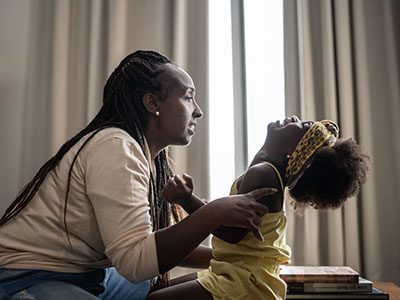Does your child look like they’re giving you the Evil Eye? It might be a case of conjunctivitis! Pink eye, as it is more commonly known, is an inflammation of the membrane (or conjunctiva) that lines the inside of the eye as well as the lids that cover the eye. Pink eye is very common, and kids who suffer from allergies may get it more frequently than most. Still, it’s being common doesn’t make it any less painful for kids or stressful for their parents. Here’s what you should know.
Causes: How do you get pink eye?
Pink eye is very contagious and can spread to other children and adults usually by touching an infected eye or the fluid/discharge from an infected eye. Most children will, almost inevitably, be exposed through daycare or school. The most common causes are:
- Bacteria (very contagious):
- Staphylococcus aureus
- Haemophilus influenza
- Streptococcus pneumoniae
- Neisseria gonorrhea
- Chlamydia trachomatis
- Viruses (very contagious):
- Adenoviruses
- Herpes virus
- Allergies (not contagious)
- Chemical conjunctivitis: (not contagious) Sometimes a newborn may react to the drops given at birth and may develop a chemical conjunctivitis
Research suggests that pink eye can be a symptom of COVID-19 with light sensitivity, sore and itchy eyes being the most common problems; however, pink eye as the only symptom of COVID-19 is rare.
Symptoms: What does pink eye look like?
One of the telltale signs of pink eye we’re all familiar with is — you guessed it — a redness or swelling of the eye. But symptoms can vary depending on the child’s age and the cause. Symptoms can include:
- Itchy, irritated eyes
- Swelling of the eyelids
- Redness of the eye membrane (conjunctiva)
- Mild pain when the child looks at a light
- Burning in the eyes
- Eyelids that are stuck together in the morning
Children with pink eye resulting from allergies or a virus may also experience:
- Clear, thin fluid leaking from the eyes
- Sneezing and runny nose
- Stringy discharge from the eyes
Pink eye caused by bacterial infections can also include symptoms such as:
- Thick, green drainage
- Crusty appearance of eyelids
- And ear infections!
Diagnosis and treatment
The symptoms of conjunctivitis can seem like other health conditions so it’s important to schedule a visit with your pediatrician for a diagnosis.
During your visit, your pediatrician will ask about your child’s symptoms and health history. They will also give your child a physical exam. A sample of the fluid leaking from the eye may be tested to help confirm the cause of the infection.
Once diagnosed, there are different treatments depending on the cause, symptoms and age of the child:
- Bacterial infection. This may be treated with antibiotic eye drops.
- Viral infection. Viral conjunctivitis often doesn’t need treatment. In some cases, antibiotic eye drops may be used to help prevent a secondary infection.
- Allergic reaction. Allergies may be treated with oral medicines or eye drops.
- Herpes infection. This is a serious infection and your child may need to see an eye doctor (ophthalmologist) to prevent scarring of the eye and vision loss. Your child may be treated with both oral medicine and eye drops.
Transmission: Don’t touch that eye!
If the cause of the pink eye is a bacterial or viral infection, it is extremely contagious and can spread from one eye to the other – or to other people – by touching the affected eye or fluid from the eye. Discharge from the infected eye is still contagious for 24 to 48 hours after starting treatment.
Protect yourself and prevent the spread of the infection to other members of your family by:
- Being a handwashing hero! Wash your and your child’s hands often with soap and water for at least 20 seconds.
- Changing your child’s towels and washcloth daily, and don’t let anyone else use them!
- Sanitizing commonly touched things such as tables, doorknobs, phones, blankets and toys.
- Avoiding contact lenses until your eye doctor says it’s okay. And most importantly…
- Making sure your child doesn’t touch their eyes!
Next steps
If your child has symptoms of pink eye, you should contact your pediatrician so they can diagnose and prescribe the appropriate treatment. If you live in the Washington, D.C., area you can find a Children’s National Primary Care location near you or call 1-888-884-BEAR (2327).
 https://riseandshine.childrensnational.org/wp-content/uploads/2025/11/two-friends-feature.jpg
300
400
Danielle Robbins
https://riseandshine.childrensnational.org/wp-content/uploads/2017/11/childrens_riseandshine_logo.jpg
Danielle Robbins2025-11-13 13:55:082025-11-14 10:17:49Navigating friendships when your child has epilepsy
https://riseandshine.childrensnational.org/wp-content/uploads/2025/11/two-friends-feature.jpg
300
400
Danielle Robbins
https://riseandshine.childrensnational.org/wp-content/uploads/2017/11/childrens_riseandshine_logo.jpg
Danielle Robbins2025-11-13 13:55:082025-11-14 10:17:49Navigating friendships when your child has epilepsy




















Leave a Comment
Want to join the discussion?Feel free to contribute!